Search engine optimization (SEO) is a powerful way for B2B SaaS companies to differentiate themselves and reach their target audience. By optimizing a website and its content according to search engine algorithms, SEO enhances a company’s online presence and visibility. This comprehensive guide offers B2B SaaS companies valuable insights and strategies for effectively integrating SEO into their marketing efforts. Additionally, we will explore how partnering with BEND Advisory Group can strengthen a company’s B2B SaaS SEO strategy, helping it navigate the challenges of this competitive industry.

Understanding B2B SaaS SEO
Mastering B2B SaaS SEO is essential for companies aiming to excel in a competitive digital arena. As potential clients increasingly turn to online searches for software solutions, a B2B SaaS company's visibility in search engine results becomes pivotal to attracting and retaining customers. Effective SEO strategies elevate a site's ranking and enhance user experience, driving engagement and conversions. This is especially vital in the B2B SaaS sector, where decision-makers often conduct thorough research before purchasing. Businesses can establish themselves as industry leaders and reliable solution providers by leveraging targeted keywords, optimizing on-site content, and adhering to technical SEO best practices.Partnering with BEND Advisory Group can significantly bolster these efforts. Their expertise in SEO, tailored specifically for B2B SaaS, provides customized strategies aligned with industry trends and best practices. They offer insights into competitor analysis, content marketing, and technical SEO audit strategies, empowering businesses to refine and maximize their online presence. A comprehensive B2B SaaS SEO strategy, supported by BEND Advisory Group's guidance, can enhance brand authority, boost lead generation, and spur sustained business growth, positioning companies for long-term success in an ever-evolving market.
The Role of SEO in B2B SaaS
Businesses with a strong online presence and rank high in search engine results are more likely to attract quality leads. In the B2B SaaS industry, decision-making involves multiple stakeholders and generating high-quality leads through SEO is crucial. Below are some roles B2B SaaS SEO plays in driving your business growth:
Increasing Visibility and Organic Traffic
Visibility is crucial for a successful B2B SaaS SEO strategy. When potential clients search for solutions to their business challenges, they’re more likely to connect with companies on the first web page of search results. To achieve this, start with thorough keyword research. Identify terms and phrases that resonate with your audience. You improve your ranking by weaving these keywords into your website, blog posts, and other marketing channels.
Optimize on-page elements like title tags, meta descriptions, and headers to help search engines understand your content and improve user experience. Aim to create search-engine-friendly and valuable content for your audience. Regularly publishing high-quality, informative content can boost organic traffic, establish your authority, and attract shares and backlinks from other reputable sources. Increased visibility leads to sustained organic traffic, enhancing your brand's reach and engagement in the competitive market.

Establishing Credibility and Trust
Establishing credibility and trust is crucial in the B2B SaaS market, as clients often make significant financial and operational commitments. To build this trust, a solid SEO strategy is essential. You demonstrate authority and reliability in your niche by ensuring your business appears prominently in search engine results. Start by creating high-quality, informative content that addresses your target audience's specific challenges and needs. This approach showcases your expertise and builds trust with potential clients.
To enhance credibility further, incorporate customer testimonials, case studies, and industry certifications into your content. These elements offer social proof, reinforcing other businesses' trust in your solutions. An active social media presence can help you engage with your audience, answer their questions, and build relationships. By consistently delivering value and showcasing your expertise, your B2B SaaS company can become a trusted partner, driving conversions and fostering long-term client loyalty.
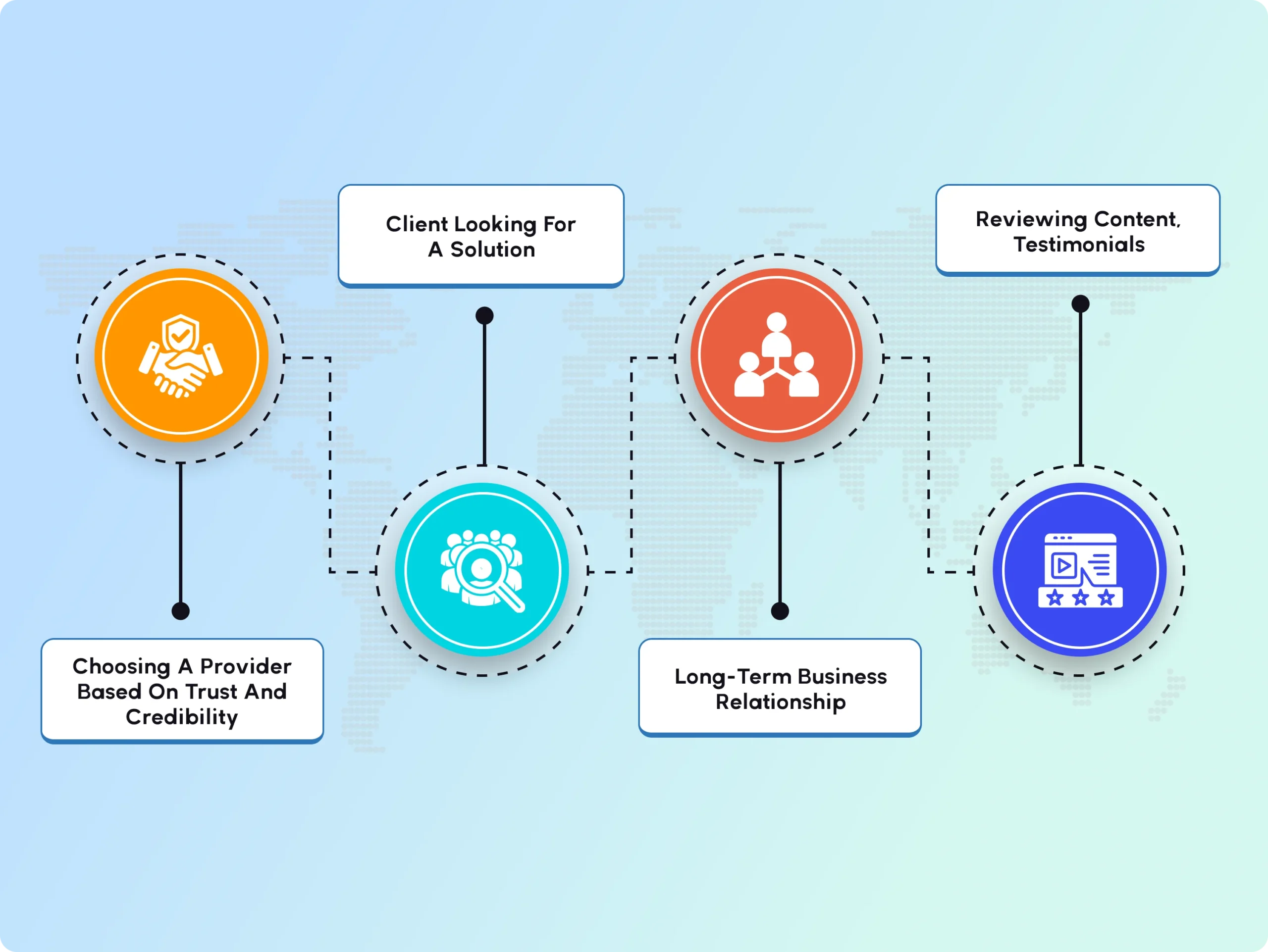
Maximizing ROI
Maximizing return on investment (ROI) is paramount for B2B SaaS companies, especially in an environment where marketing budgets must be allocated wisely. A well-executed SEO strategy is key to enhancing visibility, boosting conversion rates, and ultimately strengthening the bottom line. Begin by aligning your SEO efforts with overarching business objectives, ensuring your initiatives are targeted at generating abundant and high-quality leads.
Employ analytics tools to track and measure the performance of your SEO campaigns meticulously. This data-driven approach will inform your decisions, helping identify which strategies are most effective so you can allocate resources more efficiently. For example, if specific keywords or content types result in higher conversion rates, focus on expanding those efforts while optimizing or scaling back less successful elements. Consistently revisiting and refining your B2B SaaS SEO strategy based on data insights will help maintain a competitive advantage. By fostering a culture of continuous improvement and leveraging SEO to enhance customer acquisition and retention, B2B SaaS companies can significantly increase ROI, ensuring sustained growth and success over the long term.

Enhancing User Experience
Creating a seamless and enjoyable user experience is fundamental in the B2B SaaS sector, as it directly influences user engagement and retention rates. A robust SEO strategy significantly contributes to this objective. Start by ensuring your website is fast, mobile-friendly, and easy to navigate, as these factors are crucial in keeping potential clients engaged. Implement clear calls to action (CTAs) throughout your site to guide users through their journey, while strategically placed content can help answer their questions and alleviate any concerns.
Utilizing keyword research tools to gather insights on user behavior is essential. By understanding how users interact with your site, you can identify common pain points and optimize your content accordingly. This might involve revising unclear sections, enhancing load times, or simplifying the purchase process. Additionally, high-quality content that addresses your audience's specific needs and challenges will improve SEO performance and position your company as a helpful resource. By prioritizing user experience in your SEO strategies, you create a more engaging digital environment, fostering trust and encouraging lasting relationships with your clientele.

Staying Competitive in the Market
Making it to the top of search engine results is a constant battle, especially in the competitive B2B SaaS industry. A well-crafted SEO strategy can give your business an edge over competitors by driving more qualified leads to your site. Thorough keyword research, regular content creation, and optimization of on-page elements are critical in outranking competitors. Additionally, leveraging long-tail keywords, which are longer and more specific phrases that align with highly targeted search queries, can help you reach niche audiences and generate quality traffic.
However, SEO alone may not be enough to stay ahead of the competition. Keeping an eye on market trends and adapting quickly to changes is essential. Conducting a thorough competitor analysis can help identify areas where your competitors excel and differentiate yourself. This may involve incorporating new technologies, adopting innovative marketing tactics, or offering unique solutions to customer pain points. By consistently striving to improve and evolve your SEO strategy, you can stay ahead of the competition and maintain a foothold in the market.

SEO Strategies B2B SaaS Companies Can Implement
Whether you want to establish credibility and trust, maximize ROI, enhance user experience, or stay competitive in the market, a well-executed SEO strategy is vital for B2B SaaS companies. Here are key strategies to help you achieve success in your SEO efforts:

Align SEO With Business Objectives
Today, businesses are constantly vying for visibility and customer engagement. This is particularly true in the highly competitive B2B SaaS industry, where companies often struggle to make a mark in a vast sea of competitors. To stand out and achieve success, B2B SaaS companies must have a well-defined and targeted SEO strategy in place. However, simply implementing generic SEO techniques may not be enough to drive significant results. To maximize SEO efforts' impact, businesses must align their strategies with their overarching business objectives.
This requires a deep understanding of businesses' challenges in the B2B SaaS sector. From tight marketing budgets to constantly evolving customer needs, companies must navigate various obstacles to succeed. This is where a service like BEND Advisory can come in. With our expertise and experience in the industry, we can help B2B SaaS companies identify their specific business objectives and align their SEO strategies accordingly. By generating abundant and high-quality leads, rather than just increasing website traffic, we can help businesses achieve sustainable growth and success over the long term. So, if you want to stay ahead of the competition and establish a strong online presence that drives tangible results, let BEND Advisory be your guide towards achieving your business goals through strategic SEO.

Conduct Thorough Keyword Research
Keyword research is a crucial element in the SEO strategy of B2B SaaS companies but often poses significant challenges. As companies navigate the complexities of the digital market, they must adapt to rapidly changing market trends and increasingly sophisticated competitors. Identifying the right keywords requires a deep understanding of customer intent, which varies widely based on specific pain points and needs. Many companies find it difficult to analyze search behavior and translate it into actionable insights for their content and marketing strategies. Staying relevant amidst constant technological advancements requires a proactive approach to keyword analysis, adding to the complexity for B2B SaaS organizations.
This is where BEND Advisory offers specialized expertise, helping businesses identify high-value keywords and closely aligning them with their business objectives. By leveraging advanced analytics and industry insights, BEND Advisory facilitates a tailored keyword strategy that resonates with target audiences, ensuring that marketing efforts are strategic and effective. This alignment allows B2B SaaS companies to concentrate their resources on driving qualified traffic that directly supports their business goals, ultimately promoting sustainable growth and strengthening their competitive edge in the market.

Create High-Quality and Relevant Content
Content is at the core of any successful SEO strategy, which holds true for B2B SaaS companies. Producing high-quality, relevant content that addresses your target audience's specific needs and challenges can position your company as a thought leader in the industry and build trust with potential customers. Understanding what type of content resonates with your audience and developing a robust content marketing plan to deliver valuable information consistently is essential.
In addition to creating original content on your site, it is also beneficial to collaborate with other reputable websites or publications through guest blogging or contributing articles. This increases your brand's visibility and helps build backlinks to your site, which is crucial in SEO rankings. With the help of BEND Advisory, B2B SaaS companies can develop a content strategy that drives traffic, nurtures leads, and leads to increased conversions and ROI.

Optimize On-Page Elements
On-page SEO is essential for boosting search engine rankings and enhancing user experience. Each webpage should be optimized to align with search engine standards while delivering valuable content to your audience. Key on-page elements like title tags, meta descriptions, headers, and image alt texts should seamlessly incorporate targeted keywords to increase relevance without sacrificing readability.
Additionally, structuring your content with headings (H1, H2, H3, etc.) is crucial for guiding users through the text and highlighting key topics and subtopics. Effective internal linking can further improve navigation and relevance across your landing pages. By optimizing these on-page elements, B2B SaaS companies can craft a user-friendly experience that promotes longer site visits and higher engagement rates. BEND Advisory can help refine these strategies, ensuring your website draws traffic and converts visitors into loyal customers.

Embrace the Power of Social Media
In today's digital world, social media is a powerful tool for B2B SaaS companies like yours to connect with your audience, boost brand visibility, and drive meaningful interactions. By strategically using platforms such as LinkedIn, Twitter, and Facebook, you can build a strong online presence that complements your SEO efforts. It's important to craft a social media strategy tailored to your business goals, ensuring your messaging resonates with your target audience.
Regular updates, insightful content, and active engagement can help you establish your company as an industry authority while building trust with potential customers. Social media can inspire user-generated content and testimonials, providing social proof to enhance credibility. Integrating social media into your marketing strategy can amplify your reach and drive qualified leads for sustained growth. Seeking guidance from experts like BEND Advisory can help you navigate this market, enabling you to harness social media's potential for business success fully.
Technical Aspects of B2B SaaS SEO
As the digital landscape evolves, B2B SaaS companies face unique challenges that require a strong grasp of technical SEO. Understanding and implementing technical SEO practices is essential for optimizing your website’s performance, enhancing visibility on search engines, and ensuring that your audience has a seamless experience. Below are key technical aspects to consider when you partner with a digital company like BEND Advisory to maximize your SEO efforts.

Mobile Optimization
In today’s mobile-centric world, ensuring your B2B SaaS website is fully optimized for mobile devices is no longer optional; it’s a necessity. With growing number of users accessing online content via smartphones and tablets, your site must provide a seamless experience across all devices. Google prioritizes mobile-friendly sites in its ranking algorithms, meaning optimizing for mobile can significantly enhance your visibility in search engine results.

To achieve effective mobile optimization, consider the following strategies:

Responsive design
Implement a responsive web design that adapts automatically to different screen sizes and orientations. This ensures your content is easily readable and navigable, regardless of the device used.

Page speed
Optimize your website's loading speed on mobile devices. Slow-loading pages can lead to high bounce rates and lost opportunities. Utilize tools like Google PageSpeed Insights to identify and rectify performance issues.

Touch-friendly elements
Design buttons and navigation links to be touch-friendly, keeping in mind that mobile users will interact with your site via their fingers. Ensure clickable elements are adequately spaced to prevent frustration.

Minimize pop-ups
While pop-ups can be effective for lead generation, excessive use on mobile can disrupt the user experience. Be strategic in their implementation, ensuring they do not obstruct essential content.
Page Speed
Page speed is a critical factor in user experience and search engine ranking, making it an essential element for B2B SaaS companies to address. A faster-loading website reduces bounce rates and improves user satisfaction, encouraging visitors to explore more of your content. Google has indicated that page speed is a ranking signal, highlighting the importance of optimizing load times. To enhance your website’s performance, consider the following strategies:
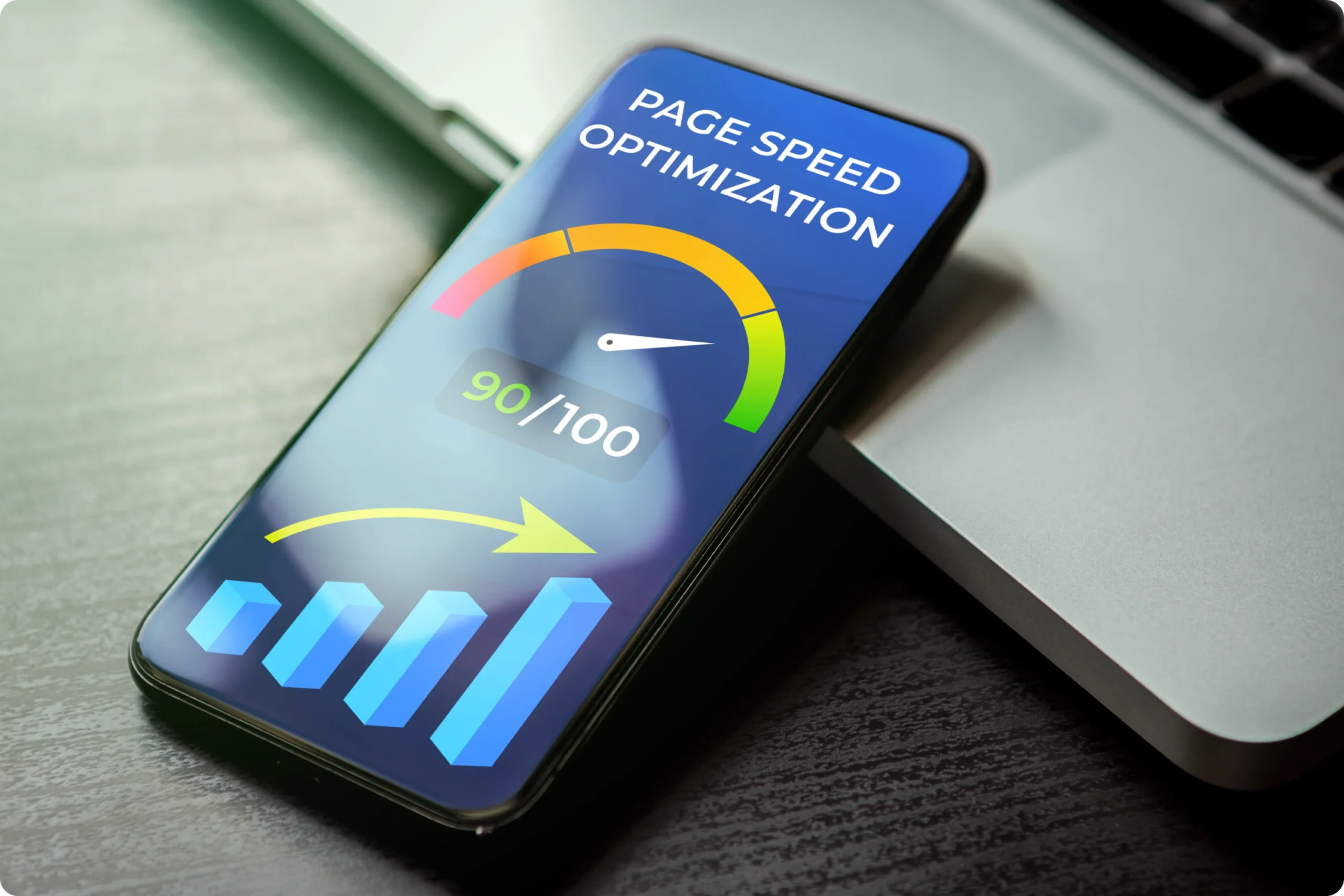

Minimise HTTP requests
Reduce the number of elements on your page, such as images, scripts, and stylesheets, to streamline the loading process. Prioritize essential content and use techniques like CSS sprites to combine images.

Optimize images
Large image files can significantly slow down your site. Use appropriate file formats (e.g., JPEG for photographs, PNG for graphics) and compress images without sacrificing quality to reduce loading times.

Leverage browser caching
Enable browser caching to store frequently accessed resources locally on users' devices. This allows returning visitors to load pages more quickly, as their browsers do not need to fetch all assets from the server again.
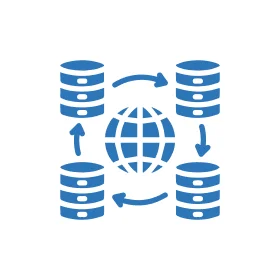
Utilize a Content Delivery Network (CDN)
A CDN can help distribute your content across multiple geographical locations, reducing latency and making the loading process faster for users regardless of location.
XML Sitemaps
An XML sitemap is a vital tool for enhancing the visibility of your B2B SaaS website in search engine results. This file serves as a roadmap, outlining the structure of your site and providing essential information about each page’s importance, frequency of updates, and when it was last modified. Submitting an XML sitemap to search engines like Google and Bing ensures their crawlers can efficiently discover and index your content, facilitating higher rankings.

To create an effective XML sitemap, ensure it adheres to the following best practices:

Include only canonical URLs
To prevent duplicate indexing issues, make sure your sitemap lists only the canonical versions of your pages.

Regularly update the sitemap
As your content evolves, regularly update your sitemap to reflect any changes, additions, or deletions. This allows search engines to keep pace with your website's developments.

Utilize sitemap index files
If your site contains more than 50,000 URLs or exceeds 50MB, use a sitemap index file to organize multiple XML sitemaps, ensuring efficient submission and management.

Ensure accessibility
Place your XML sitemap in your website's root directory and include a link to it in your robots.txt file. This increases the likelihood that search engine bots will locate and utilize it.
Website Architecture and Navigation
A robust website architecture is essential for user experience and search engine optimization. A thoughtfully designed structure makes it easier for users to find the information they need and enables search engines to crawl and index your site more effectively. Begin by implementing a clear taxonomy that organizes content logically and intuitively. This can be achieved by identifying key categories and subcategories that reflect the themes of your offerings, ensuring users can navigate seamlessly through your site.

To enhance navigation, consider the following strategies:

Consistent menus
Maintain uniformity in your navigation menus across all pages to prevent confusion. Use descriptive labels that intuitively represent the content contained within each section.

Internal linking
Foster a link network that connects relevant pages, guiding users to related content and helping search engines understand the relationships between various pieces of your site.

Search functionality
Implement a robust search feature that lets users quickly locate specific information. This is particularly valuable for large sites with extensive content offerings.

Footer navigation
Strategically utilize the footer area by including links to important pages, such as contact information, privacy policies, and popular resources, ensuring users can easily access essential information from anywhere on your site.
Secure Sockets Layer (SSL)
Secure Sockets Layer (SSL) implementation has become fundamental for any website, especially in the B2B SaaS industry. Not only does it provide secure communication between your server and the user’s browser, but it also contributes to boosting search engine rankings. However, SSL is not a one-time implementation process. It requires ongoing maintenance and monitoring to ensure uninterrupted security for your website.

To maintain the effectiveness of your SSL certificate:

Regularly renew your certificate
Ensure you have an up-to-date, valid SSL certificate installed on your server. Set reminders well before expiration dates to avoid disruption of service.

Monitor for errors
Look for and address any errors or warnings related to your SSL certificate promptly. This could include issues with the certificate's installation or compatibility with your website's code.

Stay informed
Stay up-to-date on any changes or updates to SSL technology and best practices. This will ensure you continue providing the highest security level for your users.
Robots.txt File
The robots.txt file is crucial in guiding search engine crawlers on how to interact with your website’s pages. By specifying which site sections should be crawled or avoided, you can protect sensitive content and prioritize the indexing of important areas. This simple text file, located in the root directory of your website, is an essential element of technical SEO. Here are the key aspects to consider when managing your robots.txt file:


Disallow directives
Use the "Disallow" command to instruct search engines not to index specific pages or directories that are irrelevant or shouldn't be publicly accessible, such as admin pages or duplicate content.

Allow directives
If certain pages within a disallowed directory should be indexed, you can explicitly use "Allow" to grant permission.

Crawl-delay
If your site experiences high traffic from bots, a crawl delay can be implemented to moderate the rate at which search engines index your site, promoting a better user experience.

Testing and monitoring
Regularly test your robots.txt file using tools like Google Search Console's Robots Testing Tool to ensure it functions correctly and achieves the desired results. This vigilance helps prevent potential indexing issues hindering your site's visibility.
Schema Markup
Schema markup is a powerful tool that enhances your website’s visibility in search engine results pages (SERPs) by providing additional context to your content. This structured data helps search engines better understand the information on your site, allowing them to display rich snippets that can significantly boost click-through rates. B2B SaaS companies can leverage schema markup to highlight various types of information, such as product details, reviews, pricing, and organizational information.

To effectively implement schema markup, consider the following steps:

Choose the right schema type
Identify the most relevant schema types for your business, such as Product, Review, Software Application, or Organization. The Schema.org website serves as a comprehensive resource for the various types available.

Use JSON-LD Format
Google recommends using the JSON-LD format for adding schema markup, which keeps your code clean and easier to manage. Incorporate this structured data within the
<script type="application/ld+json"></script>tag in the HTML head of your pages.

Test your markup
After implementing schema markup, it is crucial to test it using Google's Rich Results Test tool. This step ensures that search engines can read and understand structured data correctly, helping avoid potential errors.

Monitor performance
Use tools like Google Search Console to track how your schema markup performs in search results and make necessary adjustments. Monitoring will help you further identify opportunities to enhance your SEO strategy and improve the user experience.
Monitor and Optimize Site Health
Maintaining the health of your website is essential to ensuring optimal performance and user satisfaction. Regular monitoring allows you to identify issues before they escalate, preserving your site’s credibility and search engine ranking. Here are critical practices for effectively monitoring and optimizing your site health:


Regular audits
Conduct comprehensive audits of your website to assess its performance. Use tools like Google Lighthouse or other analytic platforms to evaluate site speed, mobile friendliness, accessibility, and other key metrics.

404 Error management
Monitor for 404 errors or broken links that can compromise user experience and search engine crawl efficiency. Utilize tools to identify broken links and redirect them appropriately to maintain site integrity.
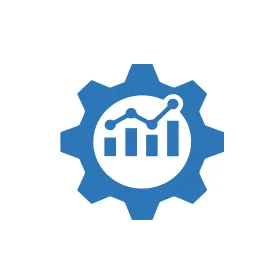
Performance metrics
Monitor vital performance metrics, such as page load times, uptime, and server response times. Tracking these figures enables you to implement solutions quickly if issues arise, ensuring uninterrupted access for users.

Content updates
Regularly revisit your content to remain current and relevant. Outdated content can negatively impact user engagement and search rankings. Make it a habit to update or refresh information to align with the latest trends or insights.
Website Speed and Performance
Website speed and performance are critical factors that can make or break your website’s success. A slow-loading site can lead to a high bounce rate, negatively impacting user experience and search engine ranking. Here are some considerations for optimizing your website’s speed and performance:


Optimize images
Large images can significantly slow down page loading times. Use tools like Adobe Photoshop or online image compressors to reduce the file size of images without sacrificing quality.

Minify code
Reducing the size of your HTML, CSS, and JavaScript files through minification can improve site speed. Minifying removes unnecessary characters from code, reducing file sizes while maintaining functionality.

Leverage browser caching
Browser caching allows quicker website loading times by storing frequently used resources on a user's device. This feature eliminates the need to request and download them whenever a user visits your site.

Content Delivery Network (CDN)
A CDN is a network of servers located worldwide that stores copies of your website's data, reducing page load times for users in different geographic locations. Consider implementing a CDN to improve site speed and accessibility.
Content Delivery Network (CDN)
A Content Delivery Network (CDN) is essential for bolstering your website’s performance and enhancing user experience, particularly for businesses with a global audience. By distributing your content across a network of servers strategically located worldwide, a CDN allows faster delivery of webpages and media files to users, reducing latency. This is critical not only for improving page load times but also for maintaining user engagement and reducing bounce rates. When implementing a CDN, consider the following key aspects:


Choose the right provider
Select a CDN provider that aligns with your business needs and target audience. Factors to consider include network coverage, performance capabilities, security features, and integration possibilities with your existing infrastructure.

Enable caching
A fundamental feature of CDNs involves caching static content, such as images, scripts, and style sheets. Configure caching rules to optimize the delivery of frequently accessed content, further improving load times.

Optimize dynamic content
While CDNs excel at serving static content, many providers offer options to optimize dynamic content delivery. Investigate strategies such as dynamic routing or edge computing solutions to enhance performance for personalized user experiences.

Security features
Leverage the security tools offered by your CDN provider to protect your website from threats such as DDoS attacks and data breaches. Many CDNs include built-in security measures that help safeguard your content and user information, instilling trust and confidence among your visitors.

Monitor performance
Regularly assess your CDN's performance through analytics tools to determine its impact on user experience and site health. Reviewing metrics such as more organic traffic distribution, cache hit ratios, and response times will enable you to make informed adjustments, ensuring optimal performance consistently.
Analytics and Tracking
In today’s data-driven landscape, analytics and tracking are vital for understanding user behavior, assessing marketing performance, and guiding strategic decisions. Partnering with BEND Advisory provides powerful analytics and tracking capabilities, enabling you to make informed decisions based on accurate data. Some key features include:


Implement tracking tools
Utilize robust analytics tools such as Google Analytics, Adobe Analytics, or Matomo to gather insights on user interactions and traffic patterns. Ensure relevant tracking codes are implemented across your site to capture comprehensive data.
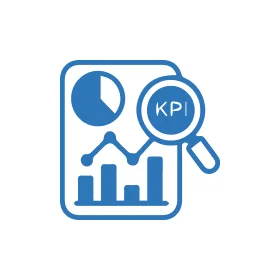
Define Key Performance Indicators (KPIs)
Establish clear KPIs based on your business objectives. Common KPIs include page views, bounce rates, conversion rates, and customer acquisition costs. Defining these metrics allows for targeted analysis and evaluation of success.

Segment your audience
Use analytics tools to segment your audience based on demographics, behavior, and acquisition channels. This segmentation will help you tailor your marketing efforts and content strategies to meet different user groups' specific needs and preferences.

Monitor behavior flow
Analyze user behavior flow to identify common pathways through your website. This can reveal obstacles hindering conversions or areas of high engagement, enabling you to optimize your site structure and content layout.

Regular reporting
Create periodic reports to assess performance against your KPIs. Utilize visual tools such as dashboards to provide a clear overview of metrics, facilitating quick decision-making. Regular reporting also helps identify trends over time, guiding future marketing strategies.

A/B testing
Conduct A/B testing to experiment with different elements of your website, such as headlines, call-to-action buttons, or layout designs. This data-driven approach lets you determine which changes yield the best results, optimizing user experience and boosting engagement.

Data privacy compliance
Ensure your tracking practices comply with relevant data privacy regulations, such as GDPR and CCPA. Be transparent with users about data collection and give them control over their information. This will build trust and foster a positive relationship with your audience.
Local SEO for B2B SaaS Companies
Local SEO is crucial for B2B Software as a Service (SaaS) companies aiming to capture targeted audiences in specific geographic areas. While B2B SaaS businesses often operate online and serve clients worldwide, effective local SEO strategies can significantly enhance visibility and engagement with regional clients. Here are key strategies to consider:
Optimize Google My Business (GMB)
Creating and maintaining a robust Google My Business (GMB) profile is fundamental for local visibility. This free tool allows you to manage how your business appears on Google Maps and in local search results. Ensure your GMB listing includes the following:


Complete information
Fill out every section, including your business name, address, phone number, website, and a detailed description of your services.

Category selection
Choose the most relevant categories for your business, ensuring potential clients can easily identify what you offer.

Regular updates
Keep your profile updated with the latest information, promotions, and events to engage with local customers and improve your ranking.

Reviews
Encourage satisfied clients to leave reviews on your GMB listing, as they can significantly impact your local SEO.
Use Local Keywords
Local keywords are essential for enhancing your local SEO efforts and attracting the right clients to your B2B SaaS business. Effective local keyword strategies include:


Keyword research
Conduct thorough research to identify local keywords relevant to your industry and service offerings. Tools such as Google Keyword Planner and SEMrush can help you find terms that potential clients actively search in your region.

Geo-targeting
Combine your primary keywords with location-specific terms to create geo-targeted phrases. For example, instead of using “customer relationship management software,” use “CRM software for small businesses in [City Name].” This helps you reach a more targeted audience looking for solutions in their area.

Utilize location pages
If your business serves multiple locations, consider creating dedicated pages for each area you target. Use local keywords specific to each location, including the business name, services, and customer testimonials relevant to that geographical area.

Content creation
Develop content highlighting local topics or events related to your industry. Blog posts, case studies, or white papers that emphasize local case studies or partnerships can help organically integrate local keywords while providing valuable insights to your audience.

On-page SEO
Ensure local keywords are effectively incorporated in title tags, meta descriptions, headers, and throughout the content of your website. This increases the chances of appearing in local search results and drawing in clients in your geographic area.
Leverage Local Directories and Citations
Utilizing local directories and citations is essential for improving your B2B SaaS company’s local SEO. These directories enhance your online visibility and build credibility among potential clients. Here’s how to maximize their effectiveness:


List your business in relevant directories
Identify and submit your business information to local directories relevant to your industry, such as Clutch, G2, or other SaaS-specific platforms. Ensure your listing is comprehensive and accurate, mirroring the information on your Google My Business profile.

Consistent NAP Information
Maintain consistency in your business Name, Address, and Phone Number (NAP) across all directories. Inconsistent information can confuse search engines and users, adversely affecting local SEO rankings.

Utilize industry-specific directories
In addition to general directories, seek out industry-specific directories that cater to B2B SaaS services. These can provide targeted visibility and connect you with businesses looking for your specific solutions.

Monitor citations
Regularly check the status of your citations to ensure your information remains current and accurate. Tools like Moz Local or BrightLocal can help you audit your citations and identify discrepancies.

Encourage mentions
Beyond formal directory listings, encourage satisfied clients and partners to mention your business on their websites, blog posts, or online reviews. Each quality mention is a citation, strengthening your online presence and authority in the local market.
Measuring Your Metrics and Analytics
Integrating robust metrics and analytics is essential to effectively gauge the success of your local SEO strategies for your B2B SaaS company. Understanding which indicators to monitor will provide invaluable insights into the effectiveness of your efforts and the overall health of your business. Here are critical metrics and methods to ensure you're accurately measuring success.


Optimizing Organic Local Traffic
Effectively tracking organic local traffic is crucial for assessing the success of your local SEO strategies in a B2B SaaS environment. This metric reflects the number of visitors accessing your site via local search queries, clearly measuring strategy effectiveness. Key focus areas include:

Analyze traffic sources
Use tools like Google Analytics to pinpoint local traffic sources. Focus on organic search, referrals, and direct traffic to understand how potential clients discover your SaaS solutions.

Track local keyword performance
Regularly evaluate the effectiveness of local keywords in your content. Identify which target keywords drive traffic and conversions and adjust your strategy accordingly. Google Search Console can provide valuable insights into the queries leading users to your site.

Assess engagement metrics
Assess user engagement with your site beyond traffic search volume. Metrics such as bounce rate, average session duration, and pages per session offer insights into content quality and its impact on your local audience.

Conversion tracking
Implement conversion tracking to evaluate how effectively your organic local traffic converts into leads or sales. This can include tracking form submissions, demo requests, or downloads customized to your business model. Analyzing local visitor conversion rates will help measure the effectiveness of your off-page SEO efforts.

Refine strategies based on data
Organic local traffic metrics analysis enables data-driven decisions that enhance your local SEO strategy. Based on insights gathered, adapt content, keywords, and user engagement tactics to ensure continuous improvement and increased visibility among your target B2B audience.


Google My Business Insights
Google My Business Insights is a crucial tool for evaluating the success of local SEO strategies in B2B SaaS. It provides essential data on user interactions with your Google My Business profile, including:

Search queries
Identify the keywords and phrases that lead users to find your business in Google searches.

Views and engagement
Monitor views, clicks, and other engagement metrics to assess your profile’s performance against competitors in your area.

Directions and calls
Use the information on your GMB profile to track how often users request directions or call your business.

Reviews
Monitor the quantity and quality of reviews. Positive feedback boosts customer satisfaction and improves local SEO rankings.

Photos
Evaluate user interactions with photos on your GMB profile. Images of your services or office space can attract potential clients and enhance engagement.
Avoid These Common Mistakes in B2B SaaS SEO
Navigating the complexities of SEO can be tough, and B2B SaaS companies often make common mistakes that can affect their online visibility and success. Recognizing these errors is crucial to developing a stronger SEO strategy. Here are key mistakes to avoid:
With many searches happening on mobile devices, not optimizing your website for mobile can hurt accessibility and user experience. Ensure your site is responsive, loads quickly, and allows easy navigation on smaller screens.
Focusing on quantity over quality can weaken your site’s authority and relevance. Instead, create insightful, long-form content addressing your audience’s pain points. High-quality content boosts your SEO rankings and builds credibility in your industry.
Incorporating keywords is essential, but overusing them, known as keyword stuffing, can lead to search engine penalties. Integrate keywords naturally to enhance readability and engagement without compromising your message.
Many B2B SaaS firms overlook local SEO, significantly impacting visibility in geographically targeted searches. Optimize for local keywords, claim your Google My Business listing, and engage with local directories to boost your local market presence.
SEO isn’t static; algorithms evolve constantly. Stay informed about these changes is vital for maintaining performance. Regularly update your SEO strategy based on current best practices to ensure compliance and visibility.
Not tracking metrics can mean missed opportunities for improvement. Use tools like Google Analytics and Google Search Console to assess your SEO performance regularly, adjusting strategies to enhance results.
Take Action Now to Boost Your B2B SaaS Visibility
Are you ready to elevate your B2B SaaS SEO strategies and see measurable results? Don't let common mistakes hold you back any longer. Partner with BEND Advisory Group today and leverage our expertise to enhance your organic local traffic, improve your Google My Business ranking, and optimize your online presence. Let us help you transform insights into actionable strategies that drive conversions and empower your business to thrive in a competitive market. Contact us now for a personalized consultation!










